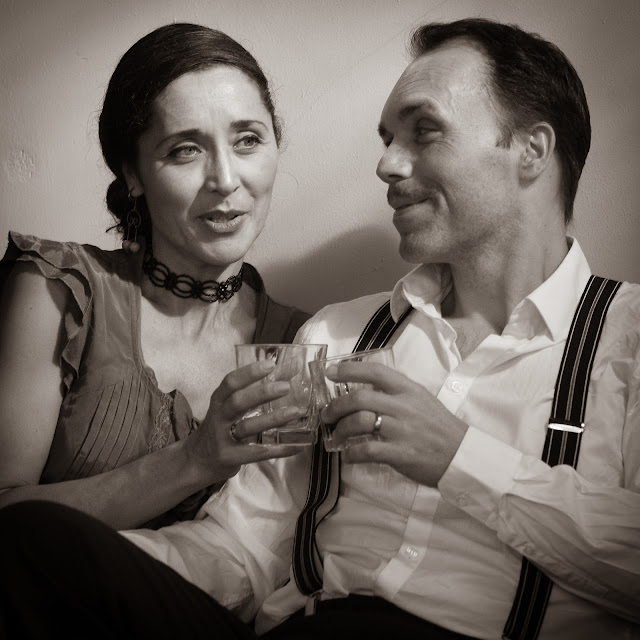Experimental music and contemporary dance: Georgia and Germany
 |
| 1/100 sec, f4.0, ISO 10,000 |
This past weekend Russudan Meipariani and friends performed an evening of original music compositions and dance to full houses in Scheer, Schorndorf and Stuttgart. In Schorndorf I was positioned right next to the dance floor and fired off 2500 photos.

I was aiming to save only the highlights, so the camera was set to -1.7EV most of the time.
 |
| 1/500 sec, f4.0, ISO 5,000 |
After a while, I realized that, thanks to the WISIWYG electronic viewfinder, it was helpful to toggle the AEL and shoot at a certain exposure as long as I was pointing my camera in a certain direction.
 |
| 1/250 sec, f4.5, ISO 4,000 |
I was shooting into the lights most of the time. I did some experimenting with shutter speeds varying primarily from 1/30 to 1/500. Did I want to capture motion in the hands and legs or stop them in their tracks with a fast shutter speed? In the best case, I'd get something like this:
 |
| 1/200 sec, f4.5, ISO 10,000 |
The colorful dresses and waving hair of the beautiful dancers were so intoxicating that I couldn't stop taking pictures.
 |
| 1/400 sec, f4.0, ISO 10,000 |
The f4/24-105 lens was perfect for the dance performance. I took a lot of the photos at 24mm in order to capture the entire scene - musicians and all seven dancers, who were spread out over the 8x8m dance floor in the Versöhnungskirche. I took about a third of the photos in APS-C crop mode so that I was shooting from the center of the sensor. I was thinking the image would be less distorted and of a better quality at a high ISO. It also crops the picture tighter when I want to concentrate on just one or two dancers.
 |
| 1/250 sec, f4.5, ISO 4,000 |
After analyzing my statistics for the shoot - something I like to do - I see that most of the best pictures were taken at somewhere between ISO 4,000-10,000 and at either 1/125 or 1/250 sec, with a slight preference for the shorter exposure. That means in order to capture this kind of motion, one needs speed and a sensitive sensor.
I was shooting with a silent shutter because I didn't want to disturb the performance. The only picture which showed signs of rolling shutter distortion was the one below, where the dancer's hand looks strange; however, that could also come from the angle and normal movement. In short: the silent shutter worked like a charm!
 |
| 1/250 sec, f4.0, ISO 10,000 |
A tightly cropped photos sends a different message from one with a frame of empty space around it. And when you get the fact, the open eyes and a hand all in one frame, you are pleased as punch!
 |
| 1/125 sec, f4.5, ISO 5000 |
Martin Zentner was sitting in another corner taking pictures throughout the performance, too. His photos on Facebook show these dancers from another perspective - and with the light shining on them (as opposed to shooting into the light). His photos turned out incredibly well! Check them out.






























